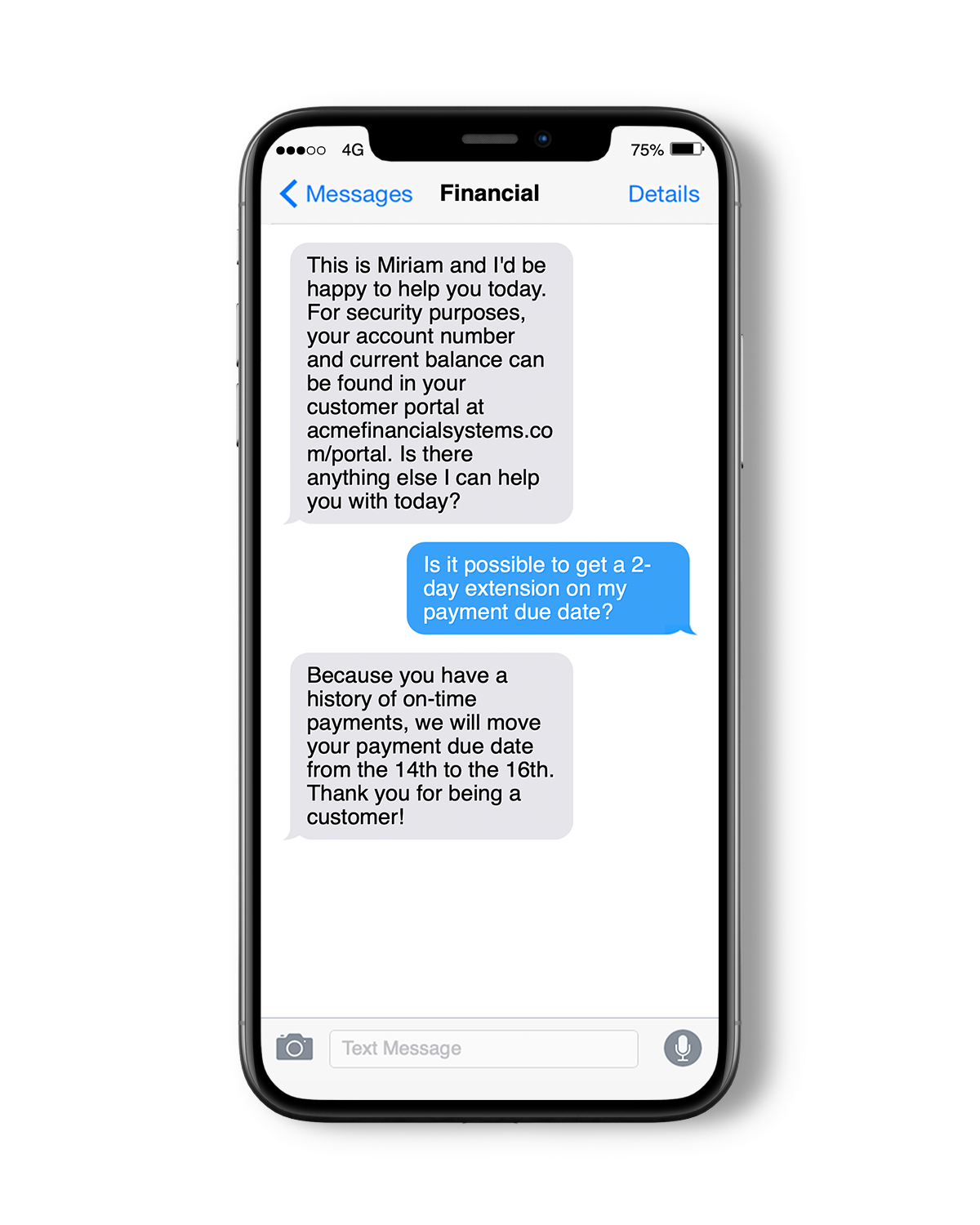SMS for Customer Service
Provide personalized service – at scale.
Enhance customer service with SMS—quick, convenient, and effective. TrueDialog’s advanced features improves response times and customer satisfaction without overwhelming your team.
Request a Demo5x
Higher Open Rates
Compared to Email80%
increased
Engagement with SMS54%
of consumers prefer text messages
but only 11% of businesses send themStreamline Customer Communication
TrueDialog’s SMS platform is tailor-made for customer service teams.
Using our proprietary Comms Hub, multiple team members can collaborate on the same customer text thread, speeding up issue resolution and enhancing customer satisfaction.
Incoming text alerts ensure timely responses.
Text templates provide message consistency, and our AI Agent offers custom suggested responses to speed up productivity.

Capture Customer Service Text Exchanges in the CRM
By centralizing all text communications in the CRM, gain a comprehensive view of customer satisfaction, enabling better decision-making, streamlined operations, and improved customer relationships.
TrueDialog natively integrates with major CRM applications quickly and easily, offering a unified texting solution across customer service organizations.
With installation in hours, a drag-and-drop account tree, and advanced reporting, operations have never been easier.


















